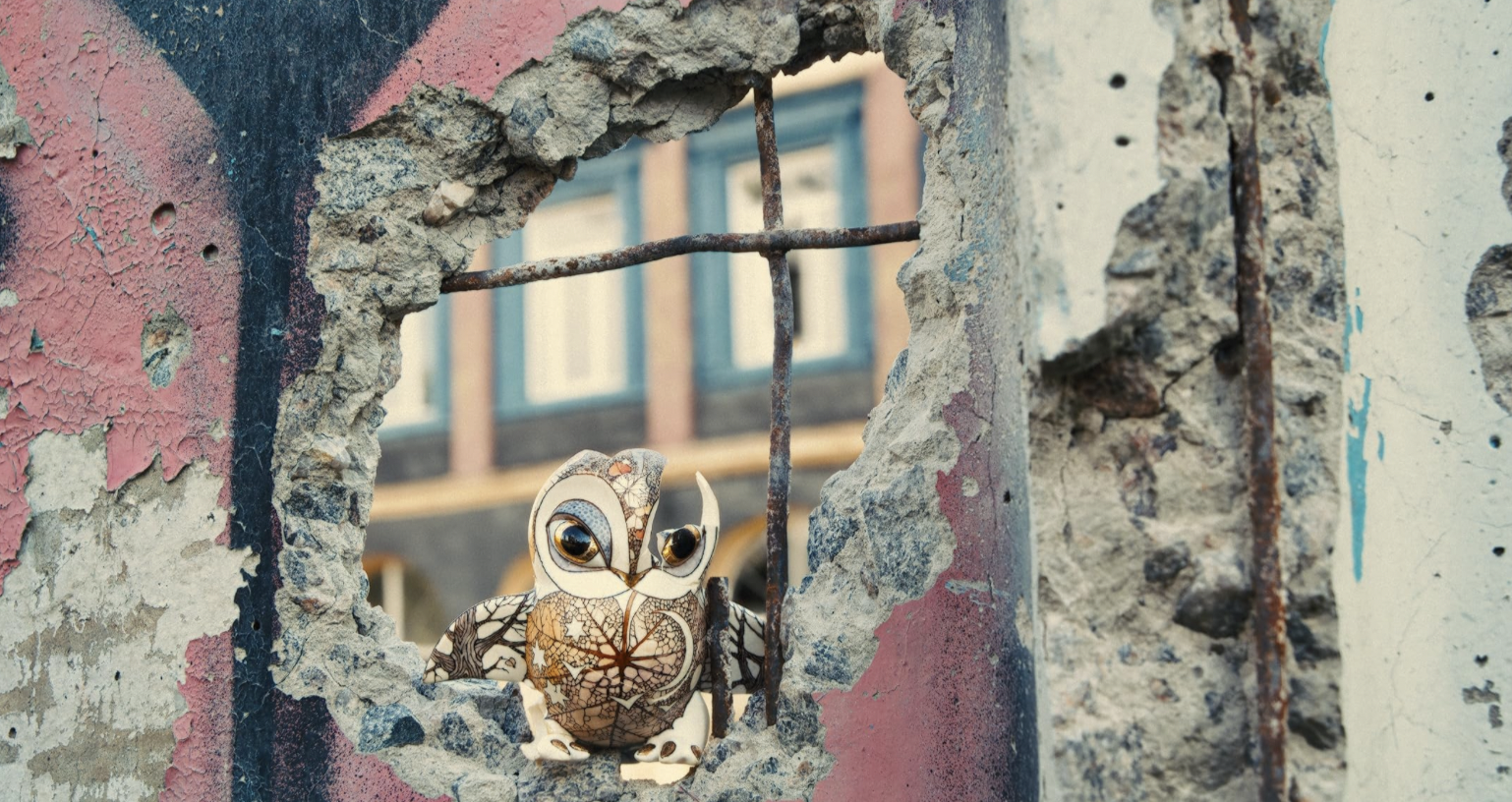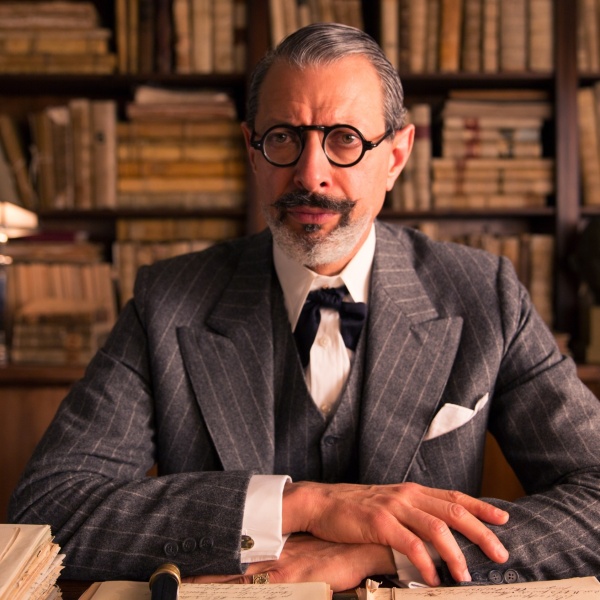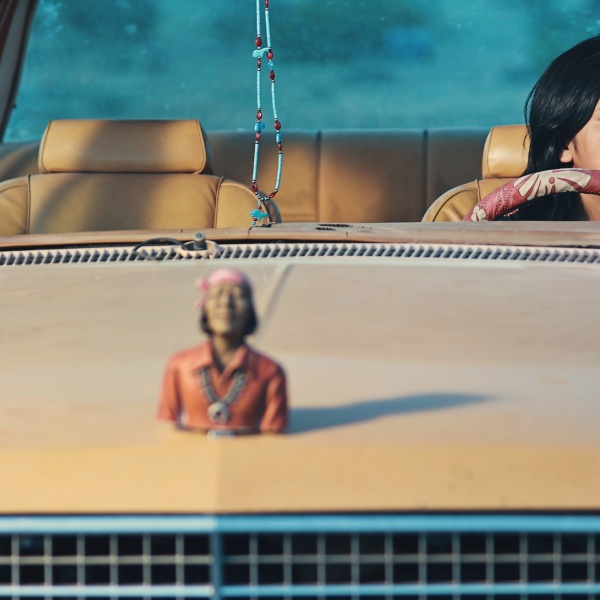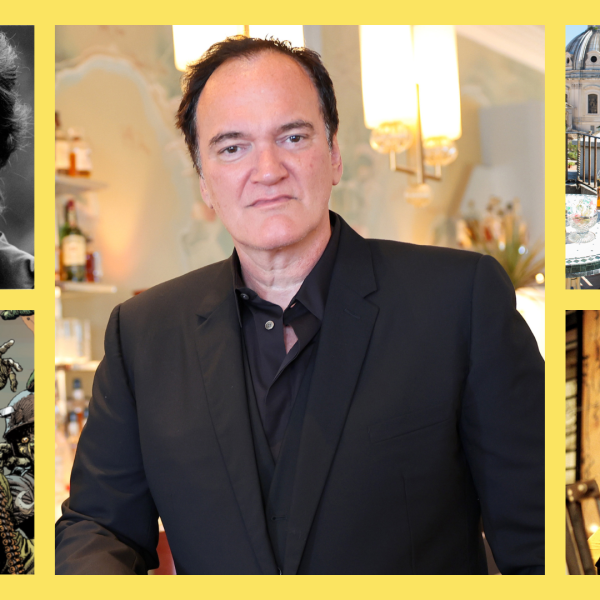Featuring footage filmed on the ground by co-director Slava Leontyev, a Ukrainian artist and former soldier of the Ukrainian Special Forces, “Porcelain War,” which was co-directed by Brendan Bellomo, seeks to present the power of artists standing up against the violence of war through their work. Unfortunately, because much of the documentary’s narration leans heavily into propagandistic rhetoric and Leontyev’s footage is edited in such a way that it often resembles armed forces recruitment videos, it fails to actually strike the desired balance.
Before Russia’s war of aggression on Ukraine, Leontyev lived in idyllic rural Crimea, where he and his wife Anya worked together on beautiful porcelain sculptures. He creates the shapes, like owls and snails and dragons, and she paints mosaic-like scenes of rural bliss, sometimes also featuring snails. After the invasion the duo, along with their painter friend Andrey Stefanov and their dog Frodo, moved to the city of Kharkiv, where they continued to make art while living in a cramped space among the rubble.
Porcelain here serves as a metaphor for the endurance of the Ukrainian people. “Porcelain is fragile,” Leontyev says, “yet everlasting. It can withstand extreme heat and even after thousands of years of burial it can be restored.” The co-directors aim to tease their metaphor out by showcasing the artists’ continuing to live and create their beautiful works of art despite the chaos around them. Yet, the directors never quite find the right symmetry between scenes of life and art with those that uncritically glorify violence.
The sequences with the artists out in fields and forests absorbing inspiration for their work are filmed beautifully by Leontyev. He lovingly captures the purple flowers and yellow hues of the natural world, the sparkling water as Anya swims, and the golden light as Frodo frolics with glee. He then creates a shocking contrast by cutting to footage of their city under siege, the sky now a dark cobalt blue, lit up with rust-colored explosions. This contrast is brought to artistic life as well through animated sequences of Anya’s paintings that transform from their colorful scenes of joy and whimsy to ones filled with the darkness of sorrow and fear.
Equally powerful are the scenes where Leontyev turns his camera on Stefanov as the painter describes how the drastic change from his peaceful life in the country to one who has become displaced by war has forever altered him as an artist. In one scene, the camera holds steady on his expressive face for several minutes as he tells of his decision to drive his family to the Polish border in order for his daughters to stay with a friend in Lithuania. Later, after his family has left after a visit, he opines “The worst is the uncertainty of what’s next. Will there be a next?”
Frustratingly, these personal moments are few and far between. Most of the documentary focuses on Leontyev training civilians to be soldiers. We briefly meet an IT tech, a dairy farmer, etc. all of whom have joined the special forces unit. Leontyev films their guns and other weapons with a romanticized gaze. One shot has the camera lovingly pan into the mouth of a weapon. These scenes are paired with drone footage of bombs dropped on Russian occupied camps. At one point, this drone footage is over-scored with Leontyev sharing that Russian leadership sends foot soldiers to their death, knowing they are going to be bombed by the Ukrainian forces, in order to locate the bombers. His unit continues to drop bombs despite this knowledge.
These unspeakably bleak acts brought to mind David Gutnik’s 2023 clear-eyed documentary “Rule of Two Walls,” which also followed artists who stayed behind in Ukraine. In Gutnik’s documentary, their resistance work was found in remaining true to their artist sensibilities. During a time of destruction, they would continue to create and turn the very rubble of the city into a living work of art. Here we watch as Anya decorates the destructive drones operated by Leontyev’s unit.
If, as Stefanov says early in the film, Russia’s targeting of those who make culture, the writers and artists and teachers and musicians, is how they plan to destroy Ukraine, what happens when those very people are made to give up their work and become soldiers? What effect does that have on them psychologically? What effect does it have on the culture? These questions are left unasked in favor of broad, ponderous statements about good versus evil.
While Sefanov may be too close to the material to ask these hard questions, his co-director Bellomo should have had the required distance to not just compile footage, but contemplate what it all means. To try and find the balance between the violence and the art. As it stands, instead “Porcelain War” itself is its own unique horror of war.
Grade: C
“Porcelain War” premiered at the 2024 Sundance Film Festival. It is currently seeking U.S. distribution.




